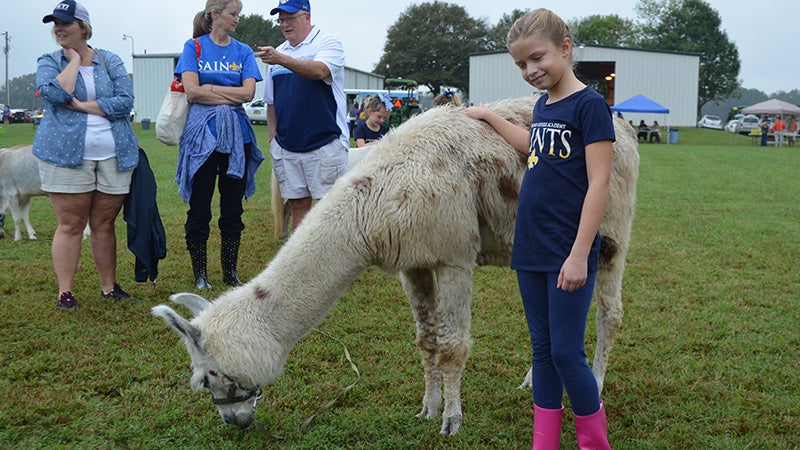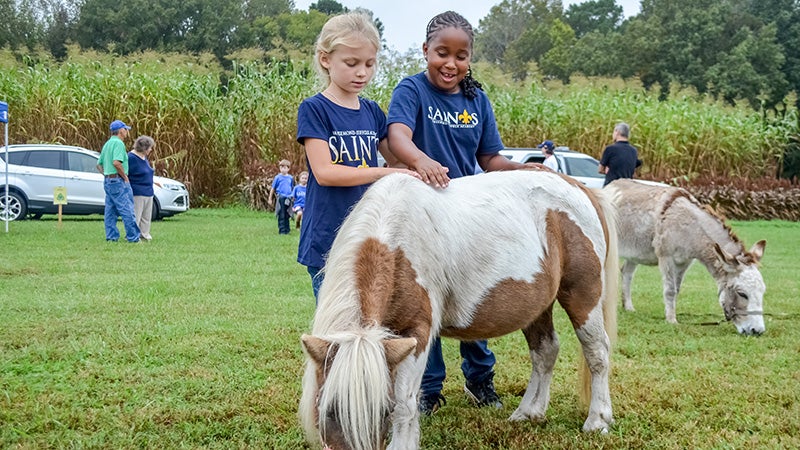Students learn on the farm
Published 9:42 pm Wednesday, October 11, 2017
Children are learning outside the classroom in Suffolk this week with memorable lessons and hands-on activities on farmland.
More than 1,000 second-graders from Suffolk Public Schools will participate in the annual Farm Day on Wednesday and Thursday at the Virginia Tech Tidewater Agricultural Research and Extension Center on Hare Road. The event is funded by the Suffolk Education Foundation and Birdsong Peanuts.
Tara Williams, district manager of the Peanut, Soil and Water Conservation District in Smithfield, started Farm Day 18 years ago in Isle of Wight and Surry counties. This marks the 15th year Suffolk schools have joined the fun.
“It’s hands-on activities they can take home to their parents about natural resources,” Williams said.
On Wednesday, students from Driver, Hillpoint, Kilby Shores, Mack Benn and Northern Shores elementary schools — plus Nansemond-Suffolk Academy — rotated among different stations at the research farm that correlate with agricultural lessons they’re learning in their classrooms.
One station showed the students how soybeans grow, and each student got a bag with a soybean wrapped in a moist cotton ball so they can watch them germinate. Another station explained how different layers of soil are formed, after which they made their own cups of snacks with soil-like layers of their own.
“We’ve touched on some of these lessons in the classroom, and they get to see them hands-on and up close,” said Arviette Hunter, Mack Benn Jr. Elementary School second grade chair. “We’re able to reflect on things that we did on Farm Day, and then incorporate them back in the lessons.”
The Teeny Tiny Farm of Smithfield brought llamas, pigs and ponies to the farm to the delight of many students. Another station across the site, however, offered them the opportunity to hold something both smaller and stranger.
The Virginia Tech Department of Entomology had a station to educate the children on insects. They learned about the life cycles of butterflies and other insects, and got close looks at some encased specimens.
Kayla Babb showed the students a Madagascar hissing cockroach, and as she explained their natural habitat and the physical features that differ males and females, she held a crawling example for the students to touch.
“At first they’re a little standoff-ish, but once they see one kid do it, they all get excited and follow,” Babb said.
Braya Vincent, a 7-year-old second-grader at Driver Elementary, was one of those brave kids.
“It was a little lumpy, and when I was holding it, it tickled a little, and when I touched it, it felt a little smooth,” Braya said.
Many parents came with their children and were impressed by these learning opportunities about animals and agriculture, including how the food they eat ends up at the grocery store.
“I think it’s good to expose the kids to this so that when they go to the store and look around, they can understand what these things are made out of, and that things don’t magically appear in the store,” said John Glaze, who came with his daughter, Aaliyah.
Most importantly, their close encounters on the farm will help them learn in the classroom.
“It engages the kids more, and it becomes more than just memorizing,” said Elizabeth Riley, second-grade teacher at Hillpoint Elementary School. “It becomes real to them. Everything they see today, they’ll remember.”










